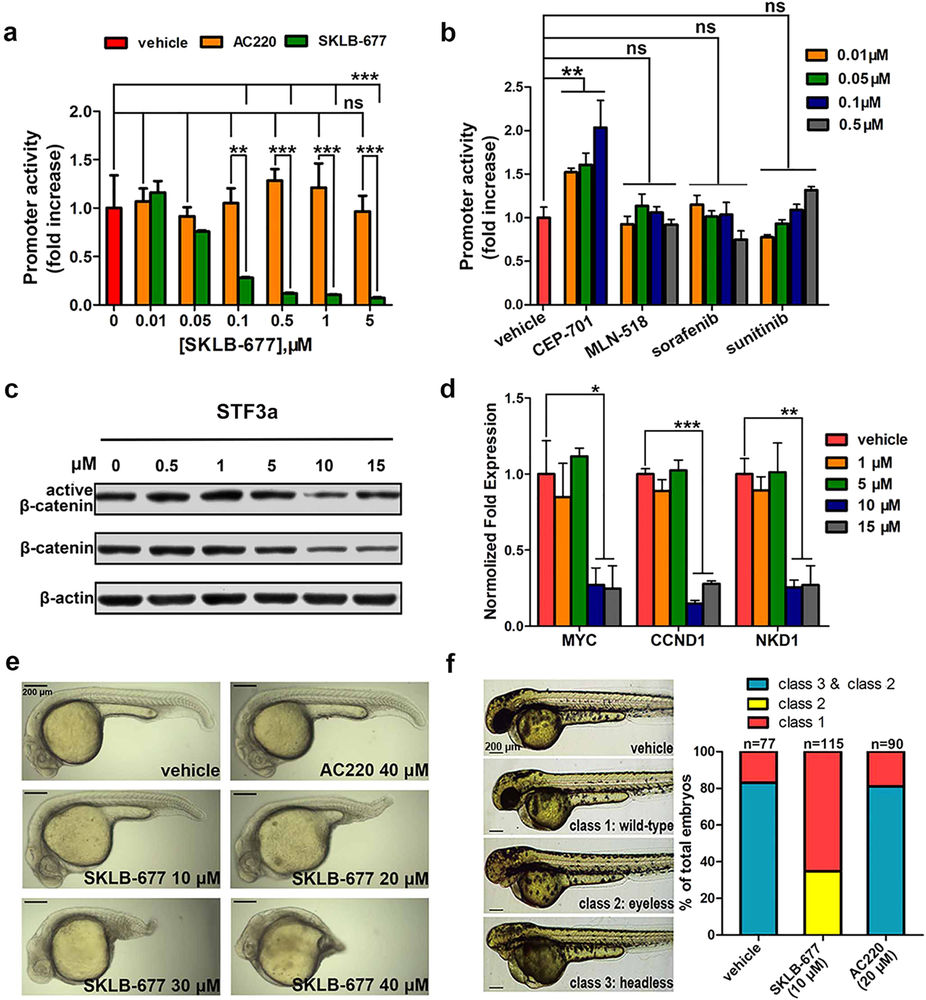Fig. 3
Effects of SKLB-677 on Wnt/?-catenin signaling.
(a) The inhibitory activity of SKLB-677 against Wnt/?-catenin pathway was determined using STF3a cells treated with various concentrations of SKLB-677 and/or AC220 for 24?h before luciferase activity measurements. All data points are means of triplicates?±?SD. ns, not statistically significant, **P?<?0.01, ***P?<?0.005 among groups. (b) The same STF3a cell assays were performed with CEP-701, MLN-518, sorafenib, or sunitinib using the indicated concentrations. ns, not statistically significant, **P?<?0.01. (c) STF3a cells were incubated with various concentrations of SKLB-677 for 24?h.The cell lysates were detected using the antibodies against S33/37/T41 Non-phospho ?-catenin (active ?-catenin), and total ?-catenin (?-catenin). (d) STF3a cells were treated with indicated concentrations of SKLB-677 for 24?h. MYC, CCND1, and NKD1 mRNA expressions were determined through real-time qPCR analysis. All samples were normalized to the level of GAPDH (mean?±?SEM from triplicate reactions). *P?<?0.05, **P?<?0.01, ***P?<?0.005. (e) Representative images of zebrafish embryos at 24hpf with tail formation after incubation with various concentrations of SKLB-677 for 20?h. (f) Zebrafish embryos were injected with wnt8.1 mRNA (30?pg) or vehicle mRNA (phaenotype control). The wnt8.1 mRNA injected embryos were incubated with 0.1% DMSO, SKLB-677 (10??M) and AC220 (20??M) at 4?hpf for 44?h. Representative images of zebrafish embryos at 48?hpf are shown. Results shown in the histogram are expressed as the percentage of embryos in each phenotypic class after the treatment (n?>?70). Class 1: wild-type, class 2: posteriorized, resulting in the loss of the eyes, and class 3: more severely posteriorized, as evidenced by head truncation.

